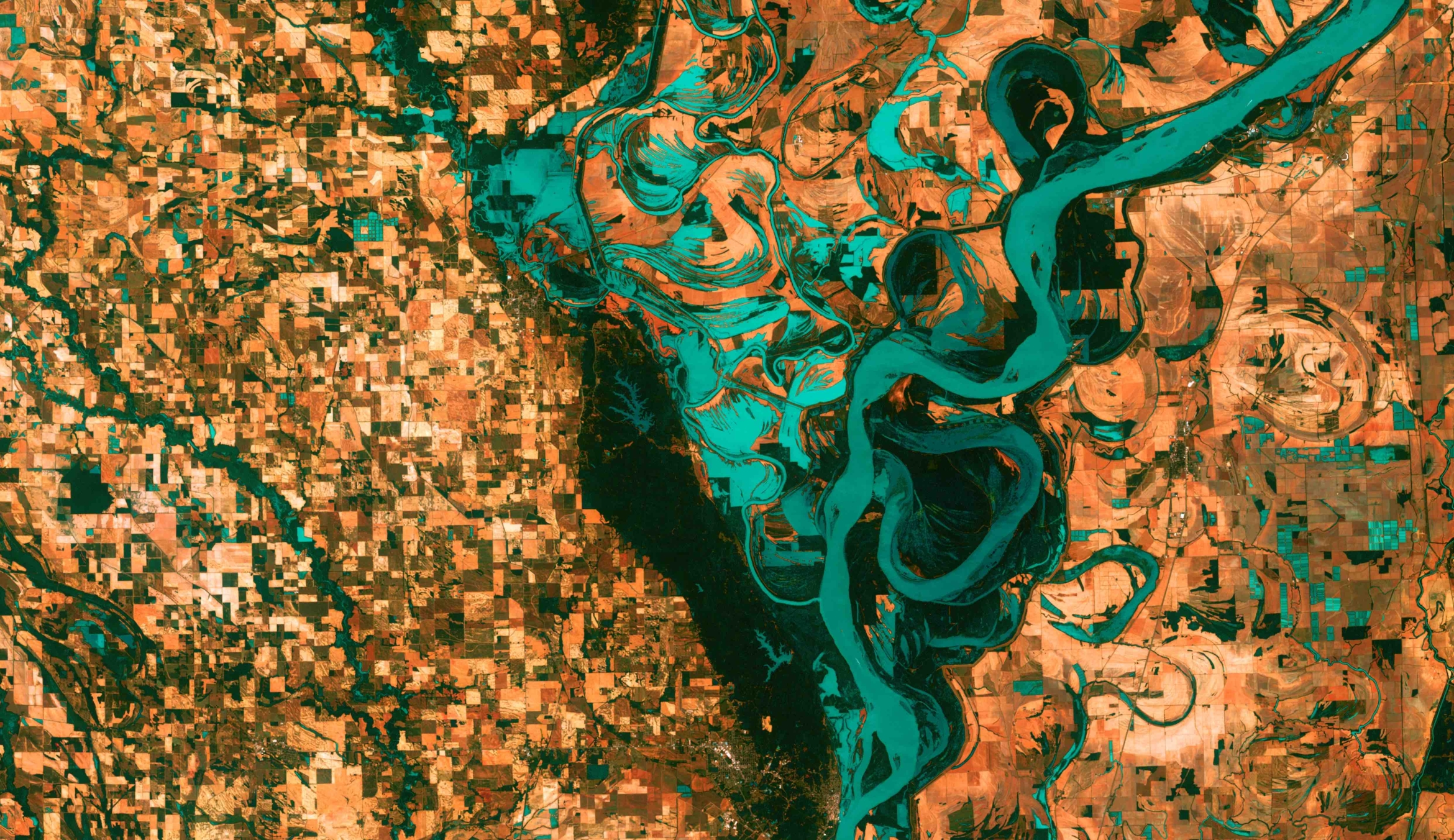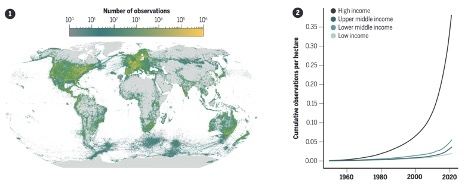
Unpacking social equity from biodiversity data: an interdisciplinary policy perspective
Biodiversity data collection is growing exponentially. The increase is driven in part by international commitments to conservation, market investments and technological advances, and the growing urgency of human impacts including climate change. Nations increasingly rely on biodiversity data in order to strategically meet global conservation targets for the coming decades. But not all data is collected equally.
Millie Chapman, a postdoctoral scholar at the UC Santa Barbara-based National Center for Ecological Analysis and Synthesis (NCEAS), studies the social and political context of biodiversity data collection. In a recent Science publication, Chapman and her colleagues demonstrate that biodiversity data is increasingly concentrated in wealthy countries. They argue that this context should be unearthed to prevent inequitable implementation of conservation projects.
Biodiversity data gives us “unprecedented insight into ecological patterns at global scales,” Chapman explains, which can greatly inform nations’ priorities for future conservation. But applying these data sets to decision-making often reveals more about us humans as a species than about any other species.
“Biodiversity data trace not only cities and roads but the rise of surveillance technology, shadows of colonial histories, and echoes of contemporary racial and economic disparities,” she said. “We can see everything from red-lining to armed conflict to macroeconomic patterns.”
These human dimensions impact not only the actual diversity of non-human species, but also how that diversity is observed and quantified. For example, the extent of European colonialism is still evidenced by the distribution of European plant and animal species around the world. Areas most impacted by extractive industries are sometimes the most studied. In those cases, the data collection is dependent on continued resource extraction. The map and graph, pictured below, show how biodiversity data is disproportionately collected in high income countries, and how that inequitable trend has grown exponentially over time.

Chapman began this work as a graduate student of environmental science and policy at UC Berkeley. She started a reading group with peers in sociology and political ecology to dive further into questions of data justice and algorithmic equity. Her current interdisciplinary research stems from that serendipitous reading group. Today, she and her co-authors, including experts in computer science and ecology, ask, “are the best available data really a suitable standard?”
Better conservation isn’t just about more data collection or better statistical methods, Chapman argued. It’s also about better understanding of the social, cultural and political context behind environmental data.
“No one domain, I think, has the answer to this problem,” she said. “And that’s a cool reason to be at NCEAS.” For nearly 30 years, NCEAS has been a leading center of synthesis science, where interdisciplinary expert groups leverage existing data to answer complex questions.
Scientists have understood these contextual inequities of data for a long time, according to Chapman. But with a dramatic increase in global attention and application of biodiversity data for on-the-ground conservation, including a multi-billion-dollar market for biodiversity offsets, these inequities can be amplified and preserved through policy.
“The path forward will require more than technocratic fixes,” she and her colleagues argue. The research team hopes to see more interdisciplinary, inclusive science policy collaboration to ensure that biodiversity data, with all of its inherent limitations and inequities, will be applied as justly as possible.
Sonia Fernandez
Senior Science Writer
(805) 893-4765
sonia.fernandez@ucsb.edu
Millie Chapman
mchapman@nceas.ucsb.edu



